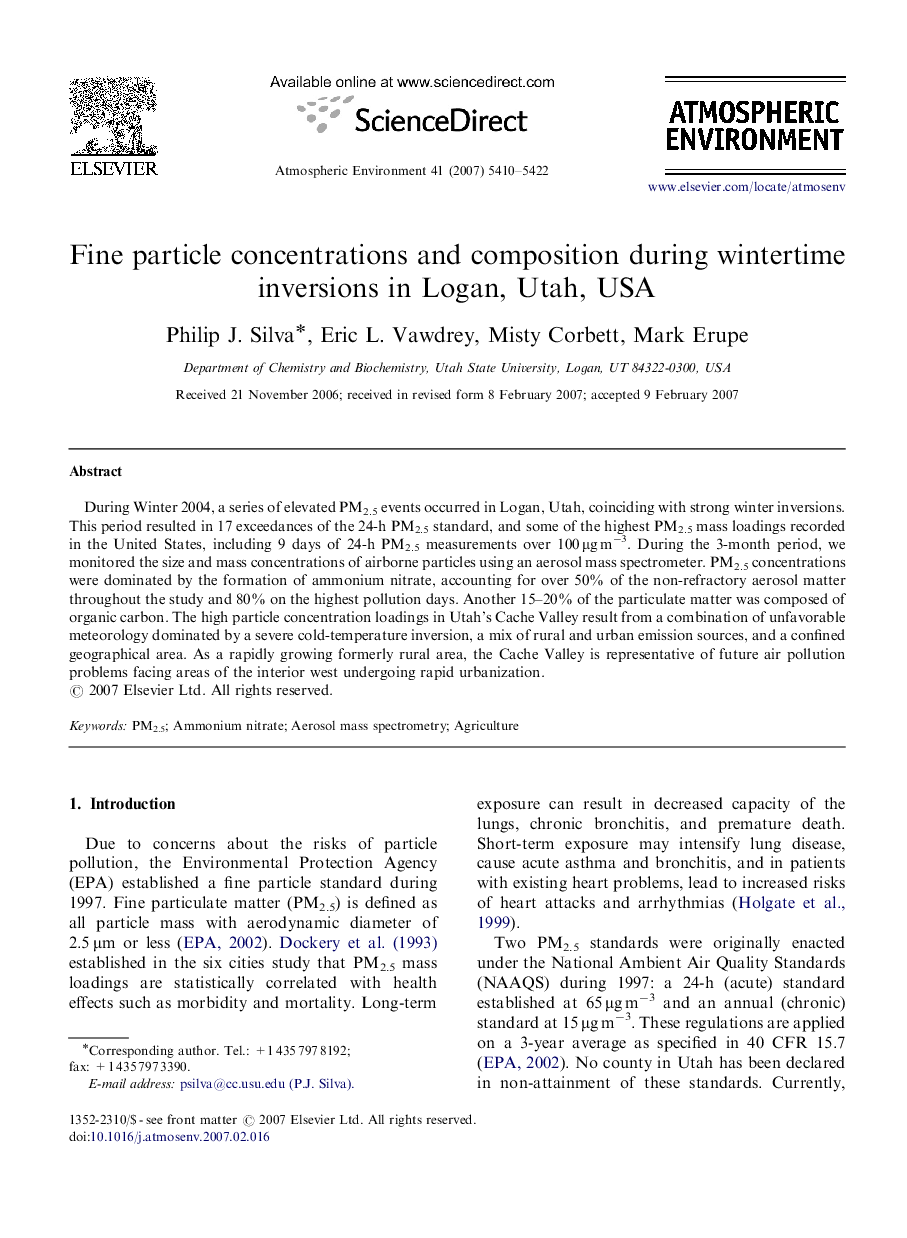| Article ID | Journal | Published Year | Pages | File Type |
|---|---|---|---|---|
| 4443448 | Atmospheric Environment | 2007 | 13 Pages |
During Winter 2004, a series of elevated PM2.5 events occurred in Logan, Utah, coinciding with strong winter inversions. This period resulted in 17 exceedances of the 24-h PM2.5 standard, and some of the highest PM2.5 mass loadings recorded in the United States, including 9 days of 24-h PM2.5 measurements over 100 μg m−3. During the 3-month period, we monitored the size and mass concentrations of airborne particles using an aerosol mass spectrometer. PM2.5 concentrations were dominated by the formation of ammonium nitrate, accounting for over 50% of the non-refractory aerosol matter throughout the study and 80% on the highest pollution days. Another 15–20% of the particulate matter was composed of organic carbon. The high particle concentration loadings in Utah's Cache Valley result from a combination of unfavorable meteorology dominated by a severe cold-temperature inversion, a mix of rural and urban emission sources, and a confined geographical area. As a rapidly growing formerly rural area, the Cache Valley is representative of future air pollution problems facing areas of the interior west undergoing rapid urbanization.
